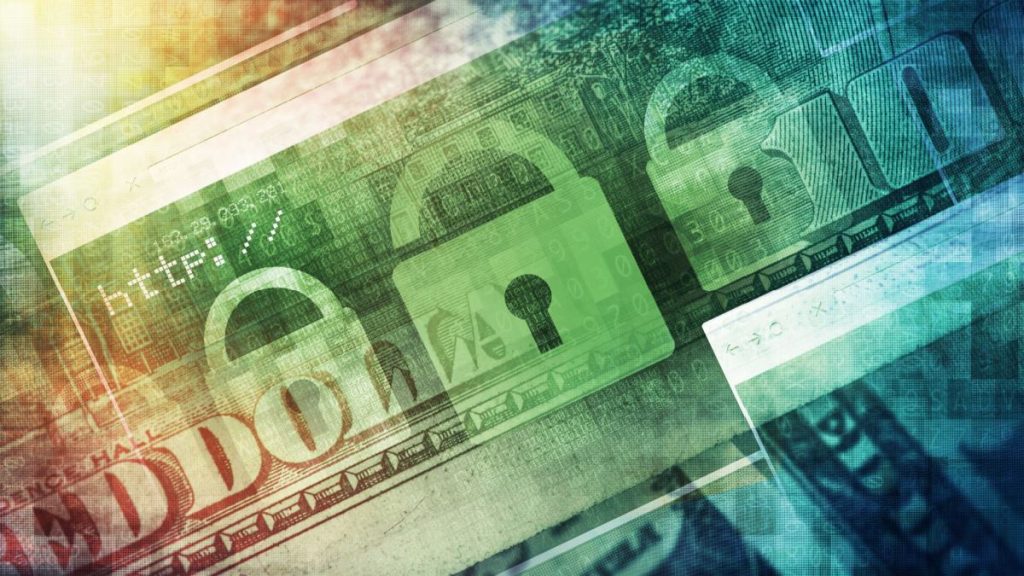
Cyberattacks are no longer phantom ghosts that come to haunt enterprises once in a blue moon. Today, cybercrimes have gained momentum and are luring, targeting, and attacking enterprises worldwide, and with that increase comes a heightened need to further optimize cyber security trends in financial services.
The third quarter (Q3) of 2022 witnessed a rise in global cyberattacks by 28 percent, compared to the same period in 2021. Over 1,130 organizations continue being the target of weekly cyberattacks. With the threat of cybersecurity risks looming overhead, 69 percent of organizations anticipate increased cyber spending in 2022.
Yet, although the numbers are alarming, you shouldn’t be discouraged.

As hackers develop highly sophisticated techniques and strategies to breach an organization, enterprise cybersecurity has seen significant updates to identify and eliminate an organization’s digital Achilles’ heel.
Recent Cyber Security Trends for Financial Services and Its Industry
Enterprise cybersecurity encompasses the practices and steps to protect an organization’s sensitive data and vital systems from cyberattacks. It also includes analyzing and securing potential weak points, and attackers can leverage other endpoints. Cybersecurity is essential for ensuring the highest level of protection for an organization’s data, resources, and the stakeholders involved in digital attacks.

Protection against cyber threats is paramount for all industries since 83 percent of organizations have experienced more than one data breach. But it must be prioritized by the financial services industry since it’s the most targeted and vulnerable industry given the large amount of sensitive data it collects from its customers.
The financial services industry is a primary target for hackers and is a goldmine for cyber attackers. It is the second costliest industry in terms of data breaches, and the average cost is US $5.97 million in 2022. Since the security threat landscape is widening for the financial services industry, they must keep up with the emerging cybersecurity trends in the financial services industry.
7 Latest Cybersecurity Trends in the Financial Services Industry in 2022
Customers are one of the most important stakeholders in the financial services industry. Cybercrime against a financial enterprise doesn’t just cost it money but also its goodwill in the market, shaking customer confidence.
As a result, 59 percent of customers wouldn’t be willing to conduct business with an organization that observed a cyberattack in the previous year.
Given the propensity of financial services enterprises to get attacked, it’s pivotal for them to keep an eye on and understand the latest cybersecurity trends to minimize risks and shape their security policies.
Here’s a rundown of the latest cybersecurity trends in the financial services industry:
- Compliance with the latest regulatory policies
Government bodies internationally are perpetually looking for ways to enhance cybersecurity laws and policies to protect the interests of all individuals better.
For instance, the California Consumer Protection Act (CCPA) aims to protect the consumer rights of individuals residing in California. CCPA controls the collection, storage, and usage of a consumer’s personal information. Businesses must comply with CCPA, and this Act gives consumers a right to take action against a firm if a lack of appropriate security leads to a data breach.
Since compliance with the latest regulatory policies is mandatory for all organizations, the financial services industry must also abide by them to avoid non-compliance penalties.
Regulatory Technology (RegTech), a buzzword in the financial and compliance communities internationally, is a subset of fintech and refers to technologies that can aid companies in complying with their regulatory requirements.
RegTech is poised to increase the security sustainability of financial enterprises by employing state-of-the-art technologies, such as big data, cloud computing, artificial intelligence (AI), and machine learning (ML). It is also effective in automating the compliance process to reduce human intervention and hence, errors.
The adoption of RegTech can assist the financial services industry in keeping up with the ever-increasing regulatory requirements.
- Growth of zero trust adoption among enterprises
Due to the decentralization of networks, devices, and users, financial enterprises can no longer blindly rely on firewalls and think that they’d serve as cybersecurity for enterprises.
This is where the zero-trust architecture comes in.
Zero trust is a security practice that works on the principle of considering the enterprise network hostile until verified. It’s based on automation and machine learning to explicitly monitor and verify the status of networks, endpoints, and other resources as per the available data.
The zero trust architecture detects real-time threats to grant users the least privileged access and eliminate risks.
This trend is gaining a lot of traction, and around 96 percent of security decision-makers believe the zero-trust architecture is vital for their organization’s success. At the same time, 76 percent of security decision-makers are adopting the zero-trust architecture for their enterprise.
- Implementation of AI for fraud detection and prevention
One of the most prominent cybersecurity trends in the financial services industry is adopting and implementing AI-based technologies for fraud detection and prevention.
AI applications are quick, secure, accurate, effective, and efficient in assessing risks and offering actionable insights. AI can be used for several financial services industries, but the most crucial task is analyzing transactions.
AI is crucial for financial enterprises to develop a robust fraud detection strategy. It can be used to sort through big data to create various consumer purchase profiles. Building a consumer purchase profile lets AI determine whether a consumer’s behavior confirms the set patterns or deviates enough from them to warrant being flagged.
Similarly, AI can also be leveraged to develop fraud scores, investigate fraud, and verify customer ID and related documentation, helping you strike the perfect balance between security and customer convenience. Fully-deployed security AI and automation also shorten the breach lifecycle for organizations and help them save costs up to US $3.05 million.
Although AI has proven itself irreplaceable, it has some disadvantages, too, when it comes to cybersecurity.
- Enhanced Reliability on blockchain systems
Blockchain systems have been touted as being highly decentralized and offering secure data flow since their introduction. The adoption of blockchain technology by the financial services industry provides a systematic approach to client identification.
Since it is based on a distributed ledger technology, blockchain lets financial enterprises take a decentralized approach to data storage, which secures them against cyberattacks.

Blockchain also allows financial enterprises to provide simultaneous access to an updated, unalterable digital ledger of transactions to multiple parties in distinct geographical locations. Financial enterprises, particularly banks, can transform their payment process by adopting blockchain systems to reduce costs and increase security.
- Establishment of SASE solutions
SASE, or Safe Access Service Edge, network architecture unites VPN and software-defined SASE, or Safe Access Service Edge, network architecture unites VPN and software-defined vast area network (SD-WAN) abilities with cloud-based security technologies.
The financial services industry will adopt SASE to take advantage of this architecture to secure web payment gateways, firewalls, and multi-cloud access security brokers and enhance zero trust network access.
SASE is emerging as a popular trend in the financial services industry because it reduces complications, improves network and security, saves money, enhances speed, and empowers multi-cloud networking. This network architecture also enables financial enterprises to safeguard their assets, improve user experience, prevent threats, and protect data.
- Increase in cybersecurity investments
The financial services industry has always seen money invested in cybersecurity as costs, not investments. But after witnessing and sometimes paying the high costs associated with cyberattacks, this mindset is changing for the better. Financial enterprises are now ready to invest in enterprise cybersecurity to protect themselves against unforeseen circumstances.
In fact, the spending on cybersecurity products and services is expected to reach $1.75 trillion between 2021-2025.

- Embracing strategic denial and deception strategy
Hackers today employ every trick up their sleeves and then some to deceive even the most sophisticated security systems. For financial enterprises to stave off cyberattacks, they must remain one step ahead of the cyber attackers.
Denying access to suspicious users and flagging anomalies in user behavior is just one piece of the puzzle. To beat cyber attackers at their game, enterprises need to adopt a strategic deception strategy too.
Through deception technology, financial enterprises can set up several digital tripwires to detect even the stealthiest cyber attackers. The deception strategy is beneficial not only for threat detection but also for threat response.
This strategy serves as the ultimate checkmate and is a popular cybersecurity trend in the financial services industry.
Awareness of Cybersecurity Trends to Beat Attackers
The financial services industry is embracing digital technologies to traverse unique revenue and value-generation opportunities. Developing countries are also exploring digital financial services.
Increased digitalization spells more opportunities for cyber attackers to exploit and deceive cybersecurity solutions. Ransomware, phishing, distributed denial-of-service (DDoS), and zero-day attacks are just the tip of the proverbial iceberg.
Financial enterprises must protect their users, systems, networks, and data against any and all cybersecurity threats to save themselves from financial damage, legal liability, and loss of reputation.
Enterprises that become the target of cybercrimes also face business continuity challenges due to losing customer confidence and market share. Hence, the financial services industry must be aware of the latest cyber security trends in financial services and invest in robust cybersecurity solutions.
Inside Telecom provides you with an extensive list of content covering all aspects of the Tech industry. Keep an eye on our Cybersecurity section to stay informed and updated with our daily articles.